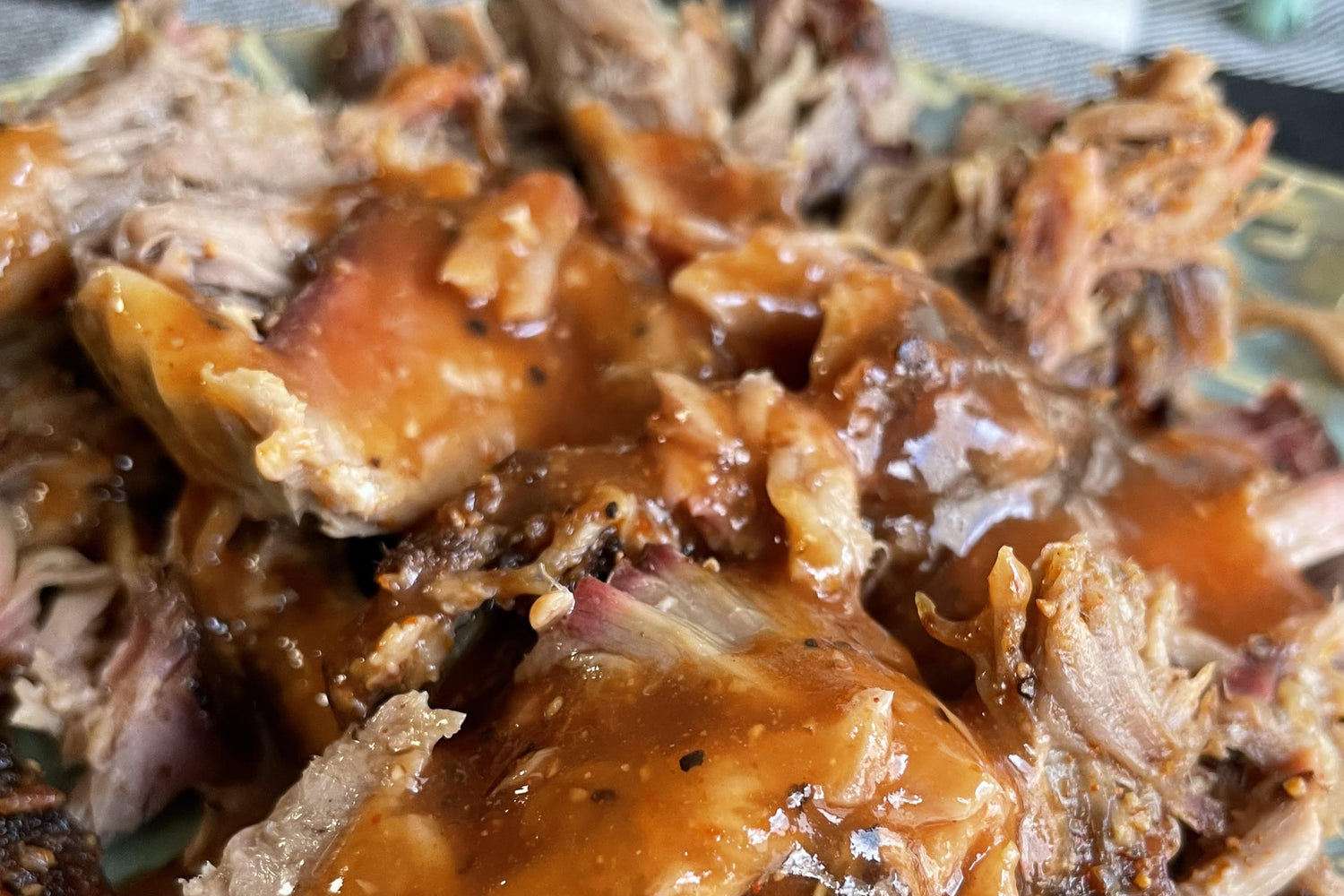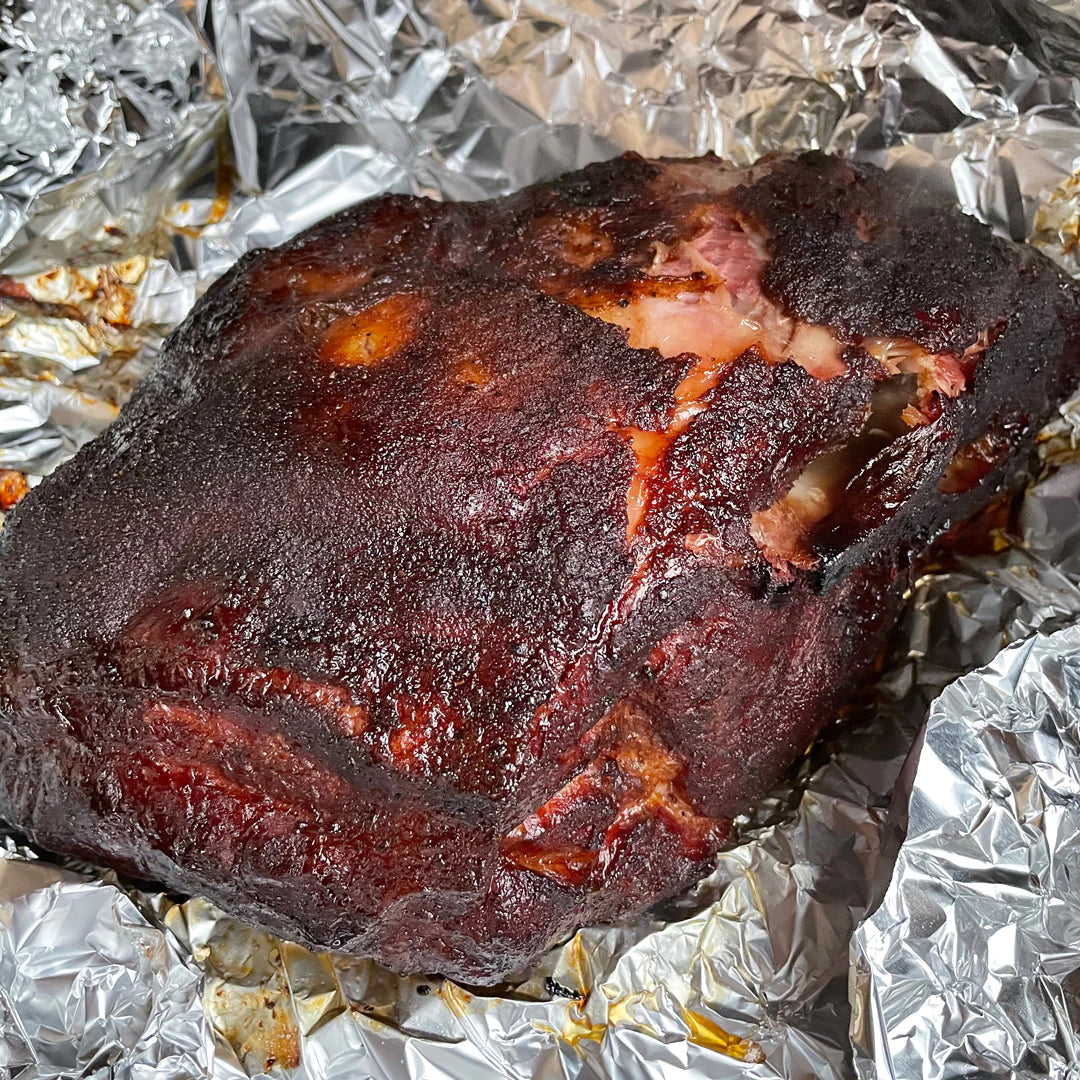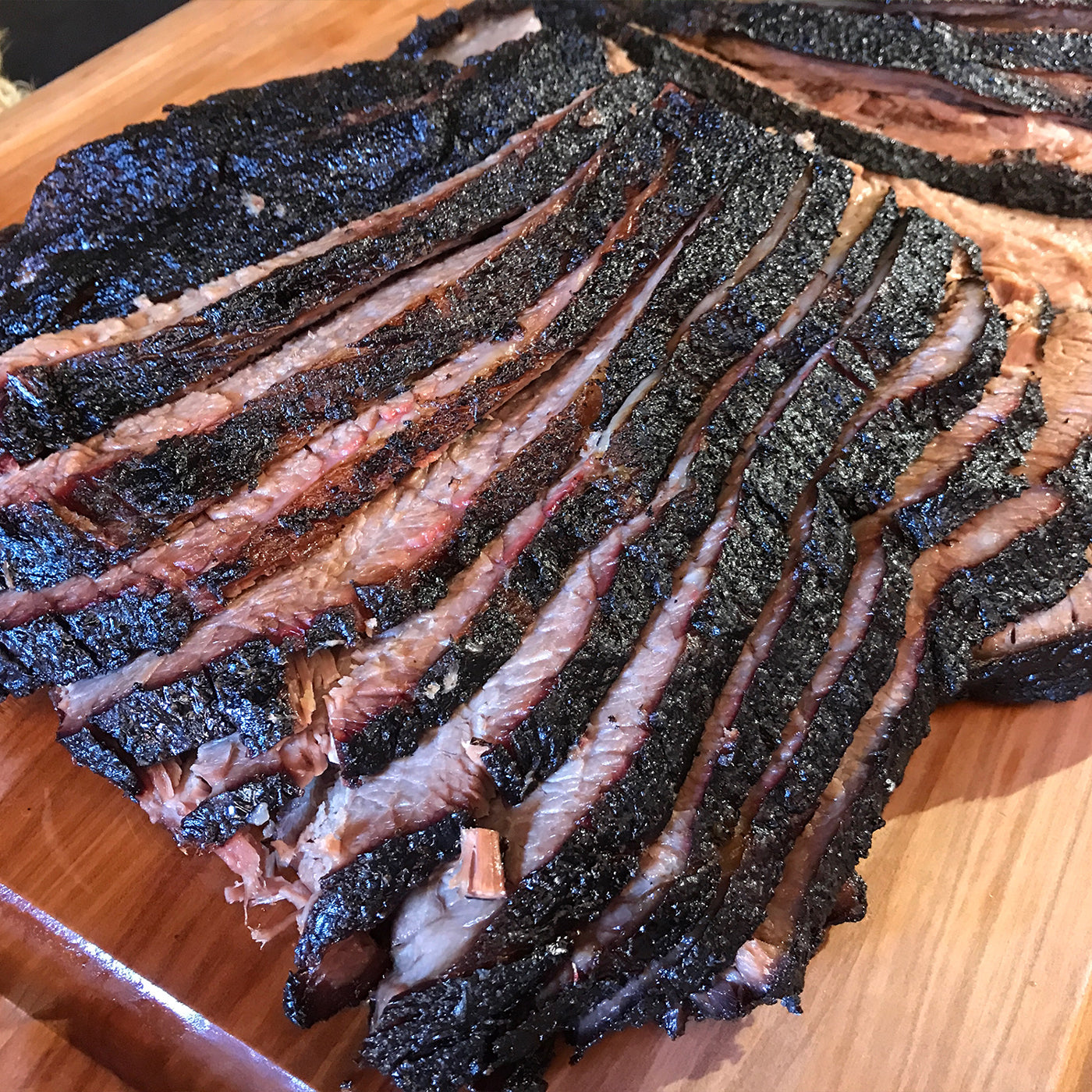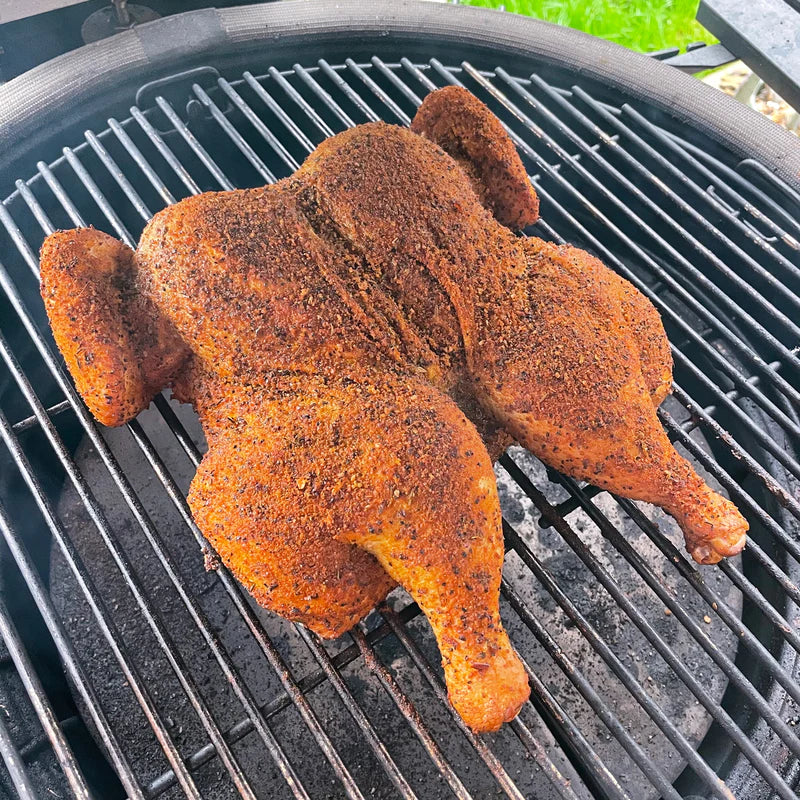Pulled pork is one of the cornerstones of traditional American barbecue, and deservedly so! Tender, smoky pulled pork is very versatile, and can be served in so many different ways. As simple as serving it straight up with a little sauce and slaw, a piled high sandwich, or sweet and spicy nachos. The only thing harder than figuring out how to serve it is waiting 12 or more hours to dig in! Life comes at you fast, and sometimes we just don’t have the extra time to accomplish that type of cook. This guide will show you how you can still get a phenomenal finished product in about half the time. If this is your first time smoking a pork butt, please check out our Beginner's Guide to Smoking a Pork Butt for the basics before going on to the "Hot and Fast" method.
Quick Pulled Pork: How to cook a pork butt hot and fast.
Using the Hot and Fast method will save you time, but there are a few differences from the traditional method that we need to pay attention to. These will help us get an end result that will be tender and juicy without risking over cooking the bark that we all strive to achieve with long cooks on the smoker.
Choosing the right cut.
Choosing the right cut for this method is very important and will determine how the final product will come out. Ideally a bone-in pork shoulder roast, also called a pork butt or Boston butt roast with a thick fat cap is what you’ll want to find for this. If you can only find boneless roasts at your local market, make sure to pick one out with a lot of marbled fat and as much of an outer fat cap as you can find. That is going to be the added insurance to keep it moist and juicy while cooking at a higher temperature. The other cut from the shoulder section is called a "Picnic" roast and will resemble what most will think of as a shoulder section. The ball and socket joint of the upper leg will be present and almost always come with the skin still on. If this is all you are able to get, you'll want to remove the skin layer down to the fat or ask your butcher to remove this for you. The cooking method will work the same for both cuts.
To trim or not to trim?
The first thing to do when unpackaging the roast will be to dry off any residual moisture on the outside of the roast with paper towels. The drier the outside, the easier it will be to handle and season. Once you have a dry roast, let's consider trimming. In our beginners guide, we suggest trimming the outer layer of fat down to help develop bark. Since we are cooking at a higher temperature, you’ll want to leave that fat cap intact as a layer of protection. The only trimming you’ll be doing is removing any pieces of fat or meat that are loose or hanging off any edges or corners of the roast, as they will just burn as the pork butt cooks.
Seasoning.
We're working with a larger cut of meat, so use the rub of your choice generously. Using a binder is welcome here but is totally optional. If you do not use a binder, just give the seasoning 10-15 minutes to adhere to the meat before flipping it over and seasoning the other side. This is the perfect way to try out our Spellbound Hot rub, but use your favorite Lane’s rub or a combination of rubs to fit your tastes.
The Cook: Times, Temps, and Tips
Whether you are smoking over charcoal, using a pellet grill, or cooking in your oven, the temperature we are shooting for in this method is 325 degrees Fahrenheit. This temperature will allow you to reduce the cooking time without completely burning up your seasoning. Once you’re up to temperature, put the pork butt on fat cap side down, facing the heat, to insulate and protect the roast from burning. There is plenty of fat running throughout the meat to keep it moist and juicy. If you have the ability to place a pan or disposable tray underneath to catch the drippings, you’ll want to do so here, any drippings you are able to collect will come in handy later. Once the meat is on and cooking, we recommend spraying with a liquid once every hour just to keep the outside damp while the bark is forming. Using one of or a combination of apple cider and apple cider vinegar with some water in a spray bottle that can produce a fine mist. After 2 hours, you’ll want to start monitoring the bark until it gets to the color you are looking for with an internal temperature of 150 to 170 degrees.
The Wrap.
Wrapping can be a bit of a controversial topic in the BBQ world, but it is crucial here. If you go all the way at this higher temperature unwrapped, you will turn the outer bark to charcoal by the time the meat is tender and shreddable in the center. Once you’ve achieved the bark you like (2–3 hours in), prepare a generous double layer of heavy duty aluminum foil and place the pork butt fat side up on the foil. Bring the foil up to create a bowl around the roast. Pour in ½ cup to 1 cup of our Itsa Vinegar sauce and any drippings you are able to collect, then seal up the foil around the meat. Continue cooking until the internal temperature has reached 200–205 degrees and the meat is soft and tender (5-7 hours total cook time).
Finishing up.
If you are cooking a bone-in pork butt, the blade bone should feel easy to remove with minimal effort. Keep the roast wrapped and allow to rest for at least 20 minutes or until cooled enough to handle. Should the meat be ready to go too far in advance, rest in a clean cooler with warm dry towels for up to 4 hours. Once you are ready to serve, use your hands or meat claws if you have them to shred the roast apart to your desired consistency. If you do not have meat claws and prefer not to pull by hand, a stand mixer or hand mixer will also do the trick. You'll want to break the roast up into 3-4 smaller chunks to help the mixer out with the shredding process. You will probably have more chunks of fat to deal with while shredding due to the lack of trimming, you can finely chop those up and add back in to the final product or discard if you wish. If the final product is drier than you want, feel free to add some more Itsa Vinegar sauce or butter to the mix. If you like to make your own stock at home, save the bone for that, they can freeze for up to a year without issue.
Don't let the higher cooking temps worry you with this method, it really is super easy to get a quality puller pork with this method. It can really be a great way to prep ahead of time for meals and events, or to even make and store to have some pulled pork on hand straight from the freezer. Check out the following recipes to make with your finished product or to use up any leftover pulled pork you may have.
Lane's Sweet BBQ Pizza with Leftover Pulled Pork - See Recipe
Lane's Brunswick Stew - See Recipe
Lane's Pulled Pork BBQ Nachos - See Recipe








Leave a comment
All comments are moderated before being published.
This site is protected by reCAPTCHA and the Google Privacy Policy and Terms of Service apply.